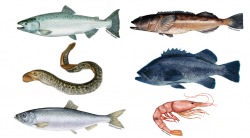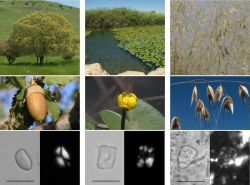Mars, often seen as a barren and lifeless world, was not always the desolate planet we know today. New research has uncovered compelling evidence that over 4.4 billion years ago, Mars was home to hot water-rich environments. These findings, derived from a tiny zircon grain embedded in a Martian meteorite, suggest that the Red Planet may have had the right conditions to support life during its early history.
The study, led by scientists at Curtin University, centers around the meteorite Northwest Africa 7034, also known as “Black Beauty.” This ancient rock holds secrets about Mars’ early hydrothermal systems—environments where heat and water interact. On Earth, such systems are critical for life, fostering ecosystems even in extreme conditions. The discovery provides a new perspective on Mars’ geological and hydrological evolution, revealing that it may have been more Earth-like than previously imagined.
Unlocking the Secrets of Black Beauty
Discovered in the Sahara Desert, Black Beauty is one of the most studied Martian meteorites. It stands out not only for its rarity but also for its unique composition. This rock, a mixture of fragments from Mars’ surface, contains materials dating back to the planet’s earliest geological era.
Central to this breakthrough is a 4.45-billion-year-old zircon grain found within the meteorite. Zircons are incredibly durable minerals that act as time capsules, preserving geochemical information about their formation. By analyzing this zircon with advanced techniques, researchers identified signatures of water-rich fluids during its formation.
Dr. Aaron Cavosie, a planetary scientist at Curtin University, highlighted the significance of the findings:
“Hydrothermal systems were essential for the development of life on Earth. Our findings suggest Mars also had water, a key ingredient for habitable environments, during the earliest history of crust formation.”
This zircon provides direct evidence of hydrothermal activity on Mars during the Pre-Noachian period, more than 4.4 billion years ago. It marks the oldest known record of water-rich conditions on the planet, opening new possibilities for understanding its habitability.


The Role of Hydrothermal Systems
Hydrothermal systems, where hot water interacts with rocks, are among the most promising environments for life. On Earth, such systems can be found in deep-sea vents and geothermal springs, where they provide the energy and nutrients necessary to sustain microbial life. The discovery of similar systems on early Mars suggests that the planet may have harbored environments conducive to life.
The zircon grain revealed geochemical markers such as iron, aluminum, yttrium, and sodium, all indicative of water-rich conditions. These markers point to a time when Mars had active magmatic processes, driving the movement of hot fluids through its crust. Such activity would have created pockets of warm, mineral-rich water—ideal settings for prebiotic chemistry or microbial ecosystems.
Dr. Cavosie explained the broader implications of these findings:
“This new study takes us a step further in understanding early Mars. It identifies tell-tale signs of water-rich fluids from when the grain formed, providing geochemical markers of water in the oldest known Martian crust.”
A Violent Yet Dynamic Past
The zircon’s story is not just about water—it also tells of Mars’ turbulent history. This grain is the first documented example of a shocked zircon from Mars, showing deformation features caused by high-pressure meteorite impacts. These impacts, with forces exceeding 20 gigapascals, would have profoundly shaped the Martian crust, influencing its geology and hydrology.
Interestingly, the shock event recorded in the zircon predates its incorporation into Black Beauty. This suggests that Mars experienced intense geological activity during its formative years, including large-scale impacts that may have interacted with hydrothermal systems to create habitable niches.


Mars and Earth: A Tale of Two Worlds
The findings from Black Beauty also shed light on Mars’ early magnetic field. Like Earth, Mars once had a geodynamo—a molten iron core generating a magnetic field. This field would have protected the planet’s atmosphere from solar winds, allowing water to persist on its surface.
These parallels between Mars and Earth raise intriguing questions about planetary evolution and the conditions necessary for life. Could life have originated on Mars as it did on Earth? If so, what traces might remain in its ancient rocks or subsurface?
Implications for Future Exploration
While Mars today is cold and dry, these discoveries suggest that it was once far more dynamic and possibly habitable. As technology advances, missions like NASA’s Perseverance rover and planned sample-return missions could uncover more clues about the planet’s past.
The study also highlights the importance of meteorites like Black Beauty. By acting as natural archives, these rocks allow scientists to piece together the history of planets and their potential for life. Future analyses of Martian samples may further unravel the mysteries of the Red Planet’s earliest environments.
Got a reaction? Share your thoughts in the comments
Enjoyed this article? Subscribe to our free newsletter for engaging stories, exclusive content, and the latest news.









Leave a Comment